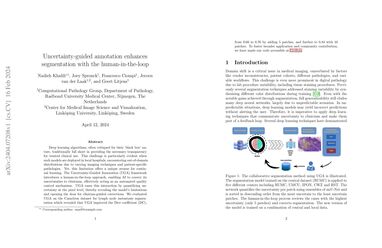Uncertainty-guided annotation enhances segmentation with the human-in-the-loop
Deep learning algorithms, often critiqued for their 'black box' nature, traditionally fall short in providing the necessary transparency for trusted clinical use. This challenge is particularly evident when such models are deployed in local hospitals, encountering out-of-domain distributions due to varying imaging techniques and patient-specific pathologies. Yet, this limitation offers a unique avenue for continual learning. The Uncertainty-Guided Annotation (UGA) framework introduces a human-in-the-loop approach, enabling AI to convey its uncertainties to clinicians, effectively acting as an automated quality control mechanism. UGA eases this interaction by quantifying uncertainty at the pixel level, thereby revealing the model's limitations and opening the door for clinician-guided corrections. We evaluated UGA on the Camelyon dataset for lymph node metastasis segmentation which revealed that UGA improved the Dice coefficient (DC), from 0.66 to 0.76 by adding 5 patches, and further to 0.84 with 10 patches. To foster broader application and community contribution, we have made our code accessible at
PDF Abstract
